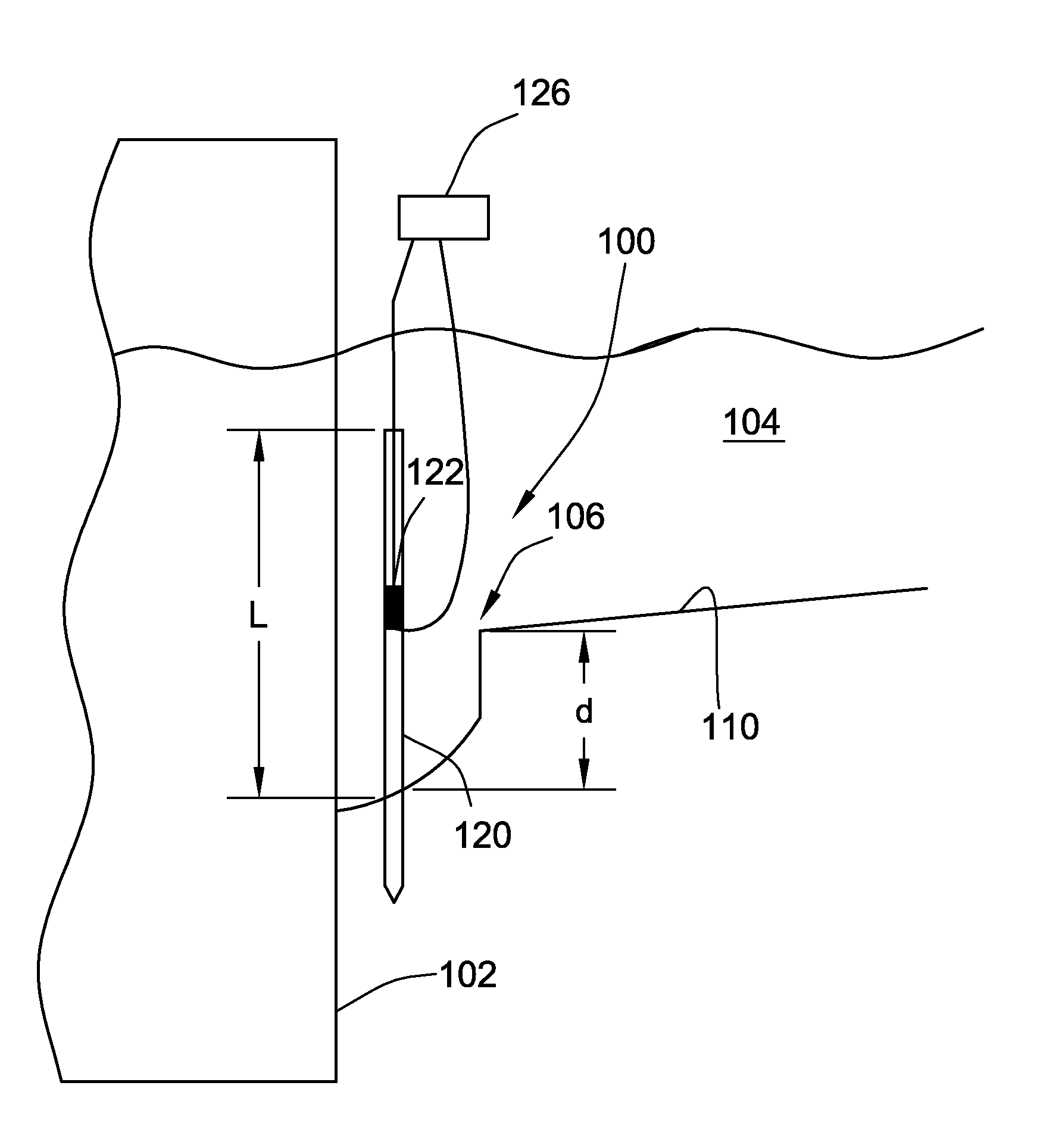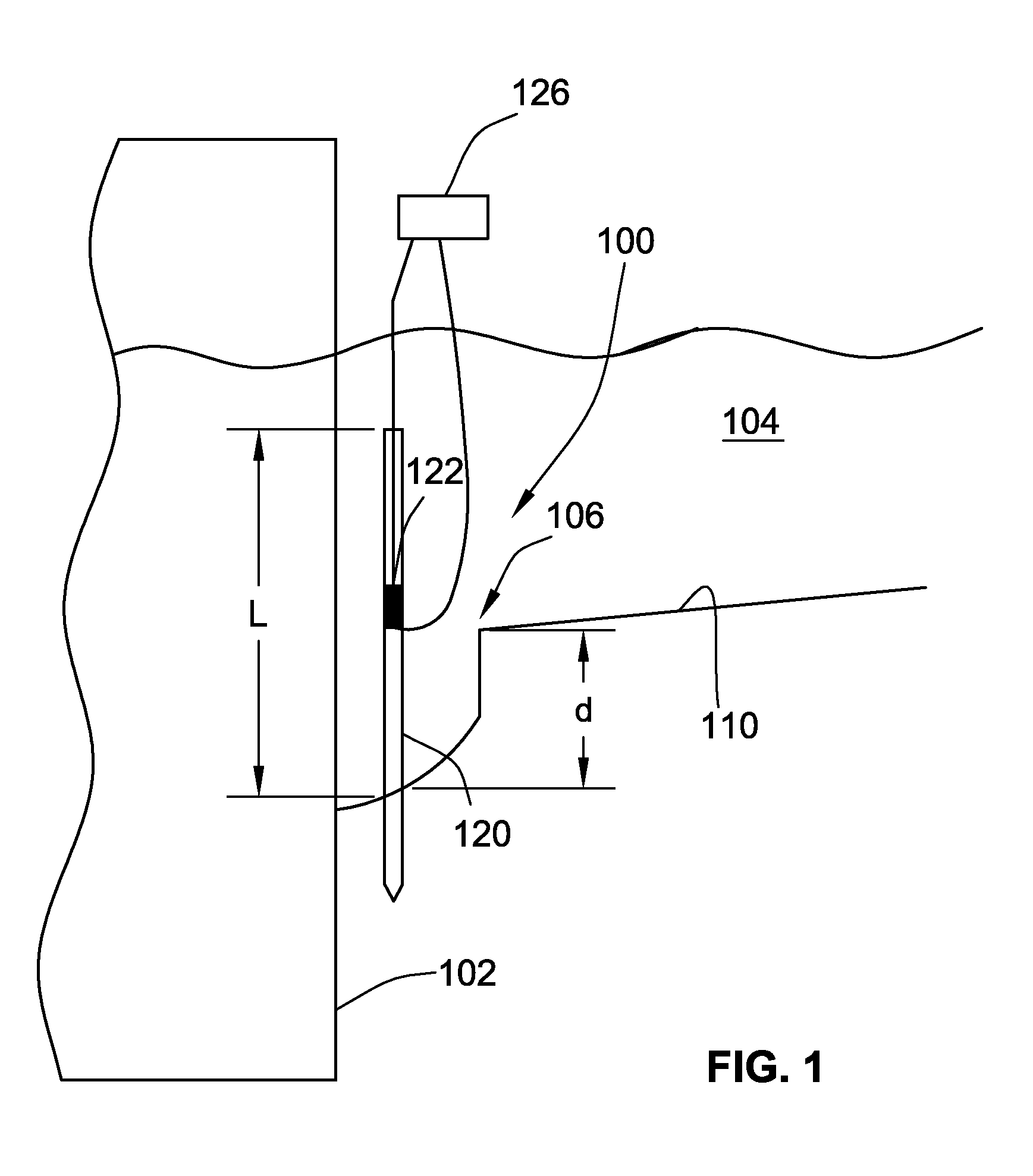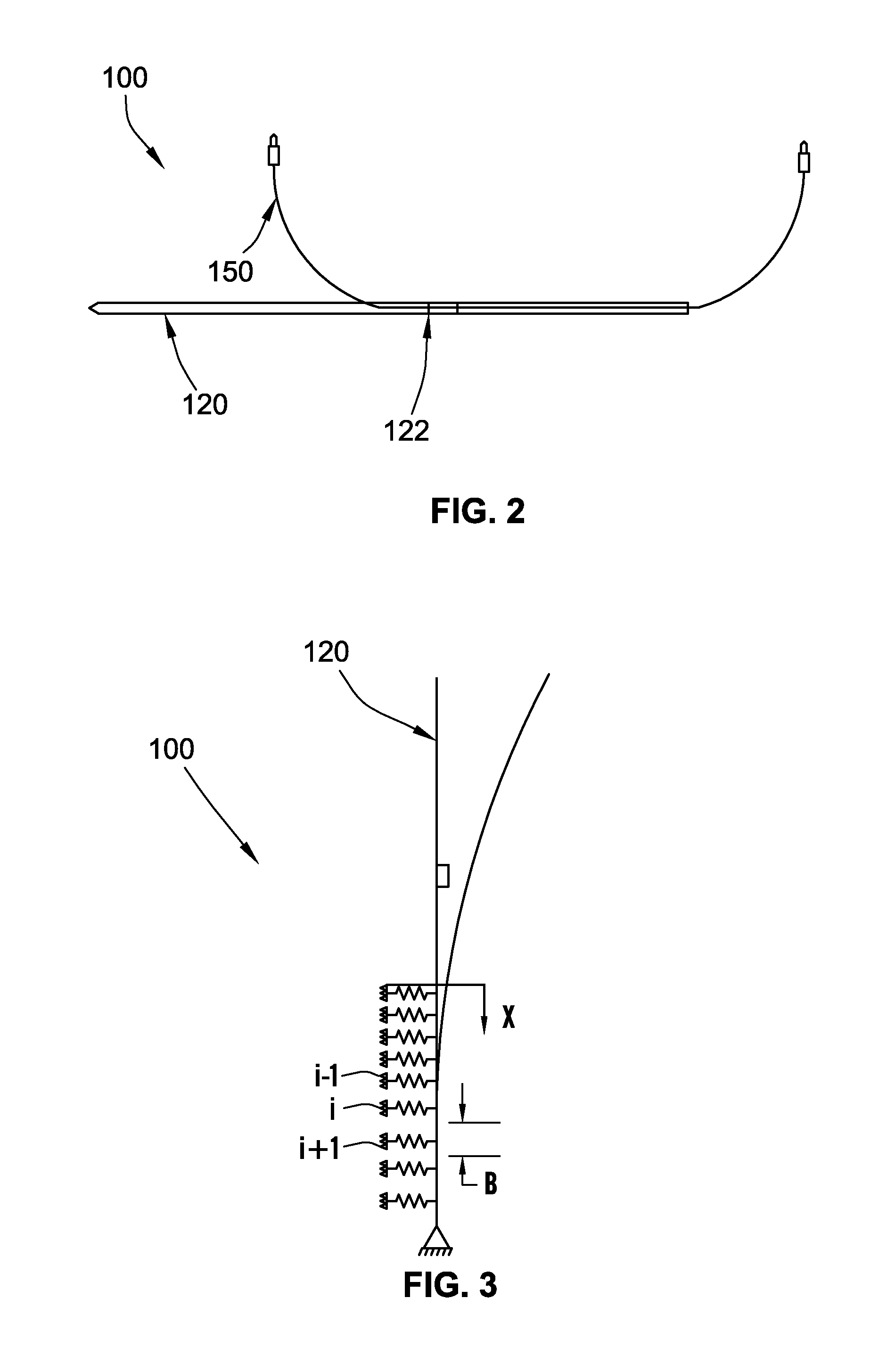Scour sensor and method of using same
a technology of scour and sensor, applied in the field of sensors, can solve the problems of large amount of effort expended in the research and development of scour monitoring sensors and systems, severe damage to bridges, and inability to detect scour, so as to reduce the amount of information/data, increase the usefulness of the sensor, and reduce the power required to operate the sensor.
- Summary
- Abstract
- Description
- Claims
- Application Information
AI Technical Summary
Benefits of technology
Problems solved by technology
Method used
Image
Examples
Embodiment Construction
[0060]FIG. 1 illustrates a schematic representation of a scour sensor 100 according to an embodiment of the present invention installed proximate a structure 102 formed in a body of water 104. The scour sensor 100 monitors the depth (d) of scour 106 proximate structure 102. It should be noted that the depth (d) could actually be a measure of a height of deposition of material proximate the structure 102 and not necessarily a depth of removal of material depending on the type of scour that is occurring. Typically, the depth (d) of scour 106 is measured from the bed 110 of the body water 104. Thus, scour is the change in the amount of depth (plus or minus) that the scour sensor 100 is embedded into the bed 110.
[0061]With supplemental reference to FIG. 2, the sensor 100 generally includes an elongated rod 120 driven into bed 110 of the body of water 104 such that a portion of the rod 120 extends out of and above bed 110 and a portion is embedded into the river bed 110. Due to resistanc...
PUM
| Property | Measurement | Unit |
|---|---|---|
| diameter | aaaaa | aaaaa |
| diameter | aaaaa | aaaaa |
| diameter | aaaaa | aaaaa |
Abstract
Description
Claims
Application Information
 Login to View More
Login to View More - R&D
- Intellectual Property
- Life Sciences
- Materials
- Tech Scout
- Unparalleled Data Quality
- Higher Quality Content
- 60% Fewer Hallucinations
Browse by: Latest US Patents, China's latest patents, Technical Efficacy Thesaurus, Application Domain, Technology Topic, Popular Technical Reports.
© 2025 PatSnap. All rights reserved.Legal|Privacy policy|Modern Slavery Act Transparency Statement|Sitemap|About US| Contact US: help@patsnap.com



